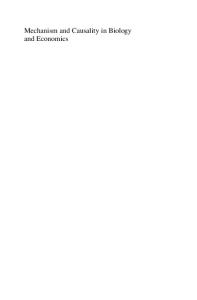Multistability and Hysteresis-Based Mechanism of Pattern Formation in Biology
Multistability plays an important role in cell signalling. Coupled with the diffusion process, it may give rise to spatial patterns in chemical and biological systems. Such processes lead to nonlinear dynamical models with multiple steady states, which di
- PDF / 835,404 Bytes
- 21 Pages / 439.37 x 666.142 pts Page_size
- 73 Downloads / 337 Views
Abstract Multistability plays an important role in cell signalling. Coupled with the diffusion process, it may give rise to spatial patterns in chemical and biological systems. Such processes lead to nonlinear dynamical models with multiple steady states, which differ from the usual reaction–diffusion systems. To investigate mechanism of pattern formation based on these concepts we propose a model consisting of a reaction–diffusion equation coupled with an ordinary differential equation. The test organism for mathematical modelling is a fresh-water polyp Hydra. The model considered here is a minimal version of the receptor-based model with multistability proposed by Marciniak-Czochra (Math Biosci 199:97–119, 2006). It describes the dynamics of nonlinear intracellular signalling coupled to cell-to-cell communication via diffusive molecules and shows how bistability and hysteresis in the kinetic system may result in spatial patterning. In particular, it is shown that multistability without the hysteresis effect is not enough for creation of stable patterns. Biologically, this model explains results of experiments such as grafting which are not easily explicable by the pure reaction–diffusion (Turing type) patterning.
1 Developmental Pattern Formation on the Example of Hydra Understanding the evolution of spatial patterns and the mechanisms which create them are among the crucial issues of developmental biology. During the development of multicellular organisms, embryonic cells choose differentiation programs based on positional information. This information is delivered by extracellular signalling molecules which are highly conserved and regulate the growth and differentiation of cells in all metazoans including humans [1]. In other areas of
A. K€othe • A. Marciniak-Czochra (*) Interdisciplinary Center of Scientific Computing (IWR) and BIOQUANT, University of Heidelberg, INF 267, Heidelberg 69120, Germany e-mail: [email protected]; [email protected] V. Capasso et al. (eds.), Pattern Formation in Morphogenesis, Springer Proceedings in Mathematics 15, DOI 10.1007/978-3-642-20164-6_13, # Springer-Verlag Berlin Heidelberg 2013
153
154
A. K€ othe and A. Marciniak-Czochra
biology, such as neurophysiology or ecology, mathematical modelling has led to many discoveries and insights through a process of synthesis and integration of experimental data (see e.g. [2] and references therein). Also in developmental biology many different morphologies have been the subject of mathematical modelling, e.g., [3, 4]. Some biological systems have attained the status of “paradigm” in theoretical work. One of the most frequently discussed organisms in theoretical papers on biological patterns formation is the fresh-water polyp Hydra. It is a simple organism which can be treated as a model for axis formation and regeneration in higher organisms [1, 5, 6]. Hydra has a tubular body about 5 mm long with a whorl of tentacles surrounding the mouth at the upper end and a disk-shaped organ for adhes
Data Loading...











